Request a video call
Confirm Your Virtual Consultation
Obesity and Endoscopic Surgery Clinic Profile Overview
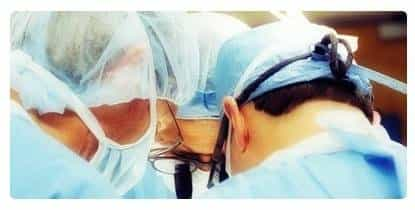
Obesity and Endoscopic Surgery Clinic offers a wide variety of laparoscopic surgery procedures. Our team of specialists is well-qualified and experienced in offering scarless laparoscopic surgeries.
Types of laparoscopy surgeries offered:
- Obesity: surgery of reduction of weight for the Morbid Obesity (gastric Bypass and sleeve gastrostomy).
- Remove adjustable gastric band: with laparoscopic, for complications or secondary intolerance to surgery of obesity.
- Stomach: laparoscopic fundoplication for reflux and hiatal hernia of any size.
- Laparoscopic resections: gastric for small tumors of stomach.
- Vesicle: Laparoscopic Cholecystectomy with and without exploration of the biliary ducts
- Appendix: Laparoscopic Appendectomy (complicated urgency for appendicitis in children and adults).
- Abdominal and inguinal hernia: Laparoscopic Hernioplasty with prosthesis or mesh.
- Gastric laparoscopic derivation: for stenosis or secondary gastric closing by caustic or chemistry burn or for benign tumors.
- Stomach and duodenum: closing of gastric or duodenal perforated ulcer by laparoscopy.
- Esophagus: laparoscopic myotomy for the esophagic achalasia.
- Spleen: laparoscopic splenectomy for illnesses of the blood and chronic anemia.
- Renal inadequacy: placement of catheter of dialysis peritoneal laparoscopic and Nephrectomy laparoscopy.
- Liver: Hepatic biopsy and abscess drainage or collections hepatic laparoscopy.
- Sharp or chronic abdominal pain: laparoscopy and therapeutic diagnostics (in cases of abdominal diagnostic doubt in women, children and older adults).
- Pancreas: Surgery derivative laparoscopic for false secondary cysts to pancreatitis or trauma.
- Complications: manage patient with secondary abdominal complications to open surgery or surgery of obesity not well managed by laparoscopy.
- Adrenal glands: Adrenalectomy laparoscopy for benign tumors of the adrenal glands.
- Colon: Handling of water-pipes, diverticulum and colon tumors for laparoscopy.
Pedro Gutiérrez Contreras MD.
Specialist in obesity surgery, laparoscopic, general surgery and gastroenterology.
- Post degree in General surgery for the General Hospital of the State of Sonora "Dr. Ernesto Ramos Bours" (UNAM)
- Post degree for the General Hospital “Dr. Manuel Gea González” in Endoscopic Surgery in Mexico City (UNAM)
Mexico has become one of the most popular medical tourist destinations for many Americans and Canadians, as well as travelers from other countries. Boasting a reputation for providing a wealth of services at half the cost in other countries such as dental care, cosmetic and plastic surgical procedures, hip replacement and more, medical travelers can anticipate saving up to 50% on medical procedure costs in Mexico, without the lengthy wait times for appointments or surgery elsewhere. Mexico enjoys some of the most modern and technologically advanced facilities in the world. Providing highly trained and experienced surgeons and physicians, Mexico has been giving the United States ample competition for years and will continue to do so as medical costs in the U.S. continue to rise.
Please Click here to request more information.
Obesity and Endoscopic Surgery Clinic Treatments Offered
ENDOSCOPIC SURGERY
Definition
The Endoscopic surgery or minimum invasion surgery is in which big incisions are not made in the abdominal wall. Instead, we cut a small incisions from 0.5 to 10 millimeters (it could be two or 5 small incisions) where small tubes of variable longitudes are introduced. These are technically called “trocars”. All the medical instruments we need for the procedure are introduced. The visualization of the abdominal cavity is filmed by a mini camera, containing three chip lens that produce real colors in a high definition screen. All of these elements give us the magnificent image.
Advantages
The main advantages of the Endoscopic Surgery or minimum invasion surgery are the following ones:
· Minimum pain after the surgery due to the size of the wounds.
· Very important decrease in the risk of infection of the wounds.
· Smaller secondary index of hernias of abdominal wall to surgery (post incision hernia).
· Smaller limitation of breathing by the minimum abdominal pain, diminishing the frequent lung complications (importantly in open surgery)
· Early reincorporation of labor daily activity, diminishing of their days in a hospital
· Cheaper than a traditional surgery (smaller cost benefits)
· The esthetic result visually minimizes scars; in almost all the cases they are imperceptible throughout time.
· The cost of the surgery is very similar to the open surgery.
· Little waste of medications because the great majority of laparoscopic procedures don’t require any medication.
The procedures more frequently carried out by laparoscopy:
· Obesity: surgery of reduction of weight for the Morbid Obesity (gastric Bypass and sleeve gastrostomy).
· Remove adjustable gastric band: with laparoscopic, for complications or secondary intolerance to surgery of obesity.
· Stomach: laparoscopic fundoplication for reflux and hiatal hernia of any size.
· Laparoscopic resections: gastric for small tumors of stomach.
· Vesicle: Laparoscopic Cholecystectomy with and without exploration of the biliary ducts
· Appendix: Laparoscopic Appendectomy (complicated urgency for appendicitis in children and adults).
· Abdominal and inguinal hernia: Laparoscopic Hernioplasty with prosthesis or mesh.
· Gastric laparoscopic derivation: for stenosis or secondary gastric closing by caustic or chemistry burn or for benign tumors.
· Stomach and duodenum: closing of gastric or duodenal perforated ulcer by laparoscopy.
· Esophagus: laparoscopic myotomy for the esophagic achalasia.
· Spleen: laparoscopic splenectomy for illnesses of the blood and chronic anemia.
· Renal inadequacy: placement of catheter of dialysis peritoneal laparoscopic and Nephrectomy laparoscopy.
· Liver: Hepatic biopsy and abscess drainage or collections hepatic laparoscopy.
· Sharp or chronic abdominal pain: laparoscopy and therapeutic diagnostics (in cases of abdominal diagnostic doubt in women, children and older adults).
· Pancreas: Surgery derivative laparoscopic for false secondary cysts to pancreatitis or trauma.
· Complications: manage patient with secondary abdominal complications to open surgery or surgery of obesity not well managed by laparoscopy.
· Adrenal glands: Adrenalectomy laparoscopy for benign tumors of the adrenal glands.
· Colon: Handling of water-pipes, diverticulum and colon tumors for laparoscopy.
Basic procedures:
Laparoscopic Cholecystectomy
Consists of the removal of the gallbladder when there are gallstones inside it (cholecystolithiasis) causing frequent hearing pain or when the gallbladder is inflamed and it is infected (cholecystitis) having stones in the long run or causing bad sanguine irrigation in patient with coexistent illnesses such as diabetes mellitus. Three small incisions are required in this surgery.
Laparoscopic Appendectomy
This procedure consists on the removal of the cecal appendix (an extension of the thick intestine) when it is inflamed. It is a frequent procedure done in surgery. For the moment we know that the best result on this procedure is obtained by laparoscopy. The advantage with this technique is that the patient doesn’t have any inflammation on the appendix (incipient or advanced with pus) and special instruments are used efficiently and in areas where open surgery is difficult. This procedure doesn't leave a scar in the abdomen. The great advantage with laparoscopy is the reduction of complications during the surgery and the less pain felt compared with traditional surgery.
Laparoscopic Diagnosis:
This procedure consists of introducing small lens through an incision and reviewing the abdominal cavity in order to search the origin of pain or the uncertain cause of intestinal uneasiness (such as: nausea, vomit, fever, sharp or chronic abdominal pain) but the cause of the symptoms despite of having been studied by other methods (laboratory or image studies), are not known. It is an effective method because at the same time we find the origin of the problem and it can be resolved in expert hands. It does not leave surgery scars and the recovery is very quick.
Intermediate procedures:
Cholecystectomy plus exploration of the bile duct:
It consists of the extraction of the gallstones in more advanced cases where the gallstones are already passed through the liver tract and are caught in the main bile duct (choledocholithiasis). It should be taken care of on time because it could leave serious infections in the ducts and in the liver (cholangitis). These infections are irreversible in the liver and it might cause the patient's death. It is possible to do this procedure with three to four small incisions.
Diverticulectomy
Sometimes abdominal pain can be present on the left side in young patients. This pain is similar to appendicitis and also causes the patient to have nausea, vomit, fever and/or bleeding when excreting. The square could correspond to Meckel’s diverticulectomy. This pain is resolved effectively by laparoscopy and introducing sharp staplers. The evolution of the patients is sensational. They require little time hospitalized and only three small holes are used in the abdomen for their cure. It is necessary to make a laparoscopic diagnosis, however the diagnosis finds the origin of the problem without laparotomy exploration (opening the abdomen completely).
Drainage Hematobilioma laparoscopy:
When abdominal pain is common, secondary post-surgery (including traditional surgery) could be done for drainage (extraction) of hematic serous collections and purulence of the cavity. In this case the patient is presented with seven days of immediate post-surgery of open cholecystectomy with important infectious state. In the revision, we find a great collection of blood and bile (hematobilioma) that conditions the deteriorated state and septum (infectious) of the patient. In this method, the patient with inadequate convalescence is inappropriate, in that it reduces an important secondary pain on recovery and nullifies the risk of infection of the wound. This conditions the prompt reincorporation of the patient’s normal life.
Laparoscopic Fundoplication for the hiatal hernia and gastric reflux:
Medical treatment is done in some cases where hiatal hernia and gastro esophagitis reflux hasn’t worked completely and the signs and gastro esophagitis symptoms persist (inflammation of the stomach or esophagus). It is also done to avoid the beginning of a cancer that the chronic reflux caused on the esophagus. This method is the most effective for resolving these pains and is actually considered Gold Standard by hiatal hernia and gastro esophagitis reflux. Many gastroenterologists maintain many years with expensive treatments for gastritis and reflux. This procedure eliminates the necessity of these medications by 95% in all of the cases and it leaves the patients free of symptoms. With some months of post-surgery pursuit, the patient can forget expensive treatments and consultations for life. It just requires four small holes of 0.5mm. It is the most convenient surgery that changes the quality of life.
Placement of catheter of Tencoff laparoscopy:
The patients that suffer inadequate ESRD and don’t have any possibilities of receiving hemodialysis because of the high costs and demand or because they just don’t have the possibility of receiving hemodialysis, so they become a candidate of a catheter placement, allowing the step of external solutions that eliminates the metabolic products on the organism. This procedure is considered complicated but the minimum invasion procedure offers many advantages that cause less post-surgery, reduction of flaw risks the catheter to provide low direct vision (it doesn't happen in open surgery), this procedure also gives them the opportunity to put in as many catheters as possible in contrast with high risks in the abdominal wall and the secondary adherences in open surgery. Proved as a very sure method in expert hands and it reduces the minimum possibility of bleeding or injured intestines (this procedure is inappropriate by open surgery). It is required to use two small holes of 0.5mm and the patient can use the catheter immediately. It is introduced openly even though the patient has had various surgeries. This method finds the ideal place to house the catheter again.
Varicocelectomy:
Patients that present secondary dilation of the veins due to draining in the testicles, have a possibility of resolving the problem in a sure and efficient way by laparoscopy. It is a procedure of few minutes and very sure. Mainly the abdominal esthetics is respected. The patient will go out in an ambulatory way. It only requires of one or two holes of 0.5mm.
Anastomosis of thin or thick intestine:
When a patient has ileostomy caused by dryness of thick intestines, surgery is possible to reconnect it or also known as reanastomosis by laparoscopy with all the advantages already mentioned if the doctor has been trained and with adapted material.
Advanced Procedures:
Adrenalectomy
Small tumors of the adrenal glands can be removed completely by reanastomosis. It is a procedure consisting in moving away the gland in an effective way and minimizing the pain. The patient recovers very quickly and could go out one day after the surgery. Contradictory with the pain caused by open surgery, this method almost completely eliminates and improves the aesthetic sequels taken place by a lobotomy or laparotomy (open surgeries). It only requires of 4 small incisions.
Bypass Laparoscopy:
Denominated like the union of a small stomach by obesity surgery in the small intestine. This procedure uses manual techniques with extracorporeal knots (outside of the body) and it is very sure based on all of the characteristics and support of this knot type. Finally the patient eats a little food and the absorption is minimal so they lose weight very quickly in sure way, it also eliminates illnesses like diabetes and arterial hypertension. It requires strict control after surgery for a surgeon specialized in bariatric.
Appendectomy for a complicated appendix
Some of the cases of appendicitis can be a difficult procedure including open surgery. Laparoscopy diminishes any possibility of complications by advanced cases of appendicitis that open surgery can’t do. It is a possibility because the lens gives perfect visualization of the anatomical structures involved in an inflammatory vision, diminishing any complications during the evolution of prompt detection and repair of the damage. (Difficult to achieve with open surgery by that limited of some incisions). It eliminates the possibility of infection of the wounds practically from the controlled procedure and the piece contaminated by bacteria is taken out through a tube that avoids the contact of detached tissues with a surgical wound, avoiding large time of healing of the infected wound or dehiscent (opened up by bad quality of fabrics). The last advantage of this procedure is that it reduces pus abscesses unique or multiples collection, it allows completed irrigation in all of abdominal cavity than traditional surgery. It can be done in the most difficult cases of appendicitis.
Derivation of pseudo cyst located in the pancreas
Some patients that suffer inflammation in the pancreas from stones (lithiasis) or for increments in the sanguine fats (pancreatitis) they can develop as we know as pancreatic pseudo cyst (false cyst of the pancreas) because it doesn't contain a true wall. These false cysts can grow as in the abdominal pain and the stages could have nauseas, intolerance of foods and vomit, with secondary malnutrition and death. This problem can be resolved by laparoscopy. The procedure is to connect between the false cyst and the intestine, causing the drainage of the intestine and with time they will disappear.
Drainage of pseudo cyst for broken pancreas:
In some cases the false pancreas cysts have been broken causing abdominal pain and abdominal chemical peritonitis. We could do the inspection, identification, drainage and unroofing of the false cyst by laparoscopy as a secure method. This procedure avoids the damage that has perpetuated and to eradicate the intestinal inflammation. In many cases the patient doesn`t require a second surgery for their control. This allows for a fast recovery, it also doesn’t increase periods of abdominal inflammation.
Splenectomy
In some hematologic or blood illnesses where the red globules and/or platelets are decreased drastically (anemia), it is necessary to extirpate the spleen, a solid organ that is located in the left side below ribs, playing as a filter that reduces cellular lines. Removing this “filter" or spleen by laparoscopy (laparoscopic splenectomy) increases significantly the platelets and globules count, contributing to the improvement of a better clinical square in the patient and reducing or eliminating the number of transfusions and bleeding that these people obtain. The laparoscopic method is a very sure, aesthetic method, without pain and it helps to reduce the frequent complications in open surgery (open Splenectomy).
Removal of gastric bands:
When the adjustable gastric bands, used by obese patients for the reduction of weight, don’t help in weight loss, and begin to cause problems in the high alimentary canal (bleeding, closing of the stomach, reflux, erosions, Barett esophagus or pre-cancer, perforation or gastric penetration) it is necessary to remove it. The elimination is carried out preferably by laparoscopy. It can be easy or difficult depending on how stuck it is inside the abdomen and adjacent viscous. The ideal method for elimination is by laparoscopy. This method provides the best functional and aesthetic result in the patient.
Sleeve gastric laparoscopy:
The gastrostomy in sleeve laparoscopy is one of the most modern and functional in reducing weight in morbid obesity cases. Initially sleeve laparoscopic gastrostomy was intended as a temporary method or first procedure to help lose weight, but excellent results were seen on how the patient lost all excess weight as well as losing 70% of the EPC. It is a restrictive method although it has a certain hormonal component for reducing a specific substance in blood that produces appetite in the human being (Grelina). It is done ideally by laparoscopy for the comfort of arriving until the deepest in the hiatus. It is a very sure method in expert hands. It requires of four small holes for its execution. The patient goes out of the hospital in about two days with a liquid diet.
Gastrojejumanastomosis:
In cases where the patient ingests sour or alkaline toxic substances accidentally or voluntarily and/or patients with benign tumors closed in the terminal part of the stomach not permitting the food in the intestine, it is required to do a gastrointestinal bypass to be able to pass the gastric juices and the food caught in the stomach. This procedure is denominated as gastrojejumanastomosis. It can be done successfully by laparoscopy. The patient's recovery is extraordinary and will be able to eat again in a few days post surgery. In these patients, nutrition is very important in order to obtain appropriate intestinal scaring, otherwise the risk of water-pipes or flights and complications are very high. The procedure can be carried out with grapeo system (mechanical gastrojejum) or with suture extracorporeal (manual gastrojejum). Both are very effective methods. The patient returns to his normal life in few weeks.
Right hemicolectomy for tumor (right colon resection laparoscopic):
Certain conditions such as complicated appendicitis that cause damage or rupture of the large intestine (a part of the colon called "Blind"), tumors of the same location and / or diverticula of the colon are possible to resect (remove) via laparoscopy. This method results in excellent recovery in spite of major surgery. By laparoscopy we avoid complications that are more common in open surgery and abdominal aesthetic is achieved as well as early re-integration into the social life of the patient.
Inguinal hernia:
The abdominal wall hernias are resolved in a safe and effective Laparoscopic way. The method is controversial because of the difficulty it presents, becoming a challenge even in experienced hands, especially in recurrent hernias (hernias already operated on by open technique that failed) and who have fibrosis or adhesions from the lack of "virginity" of the abdomen . Laparoscopic hernioplasty is a very safe and cosmetic method. It is ideal for medium and small hernias and mainly bilateral inguinal hernias, where a single approach can repair two hernias (left and right channel). It is possible to repair any type of abdominal wall hernia by laparoscopy with only three small incisions of 0.5mm.
Myotomy for esophageal achalasia
There are certain diseases of the esophagus that prevent the normal transit of food into the stomach causing weight loss and malnutrition in severe cases as well as secondary death. One of these problems is esophageal achalasia. Current treatment for this condition when pharmaceutical and endoscopic measures are exhausted, is to cut off muscle fibers at the cardia and lower esophageal sphincter (cardiomyotomy esophagus). With this procedure the patient returns to normal life within days of surgery, gaining weight and recovering nurturing himself after losing all organic functions as a patient.
Scarless procedures:
Consists of performing almost any procedure using very fine lens through natural orifices such as the navel (natural closed orifice) using articulated instruments.
Advantages
· Cosmetic procedures and surgical diseases that previously required large incisions
· Virtually no post-surgery pain
· Lower infection rates
· Reduced rate of hernias
· Less possibility of scar tissue (intra-abdominal adhesions)
· Less expenditure on pain medication
· Early reintegration to activities
Types of surgeries
· Appendix
· Gallbladder
· Ovarian cysts
· Inguinal Hernia
· Placement of catheter for peritoneal dialysis
Laparoscopic gastric sleeve:
It is a procedure that is used in weight-reduction surgery with excellent results and minimal risks to the patient. It involves taking almost 80% of the stomach vertically to form a “banana-shaped gastric tube” or a gastric sleeve (as American doctors call it) "sleeve gastrectomy" that causes restriction of food eaten by a lower storage volume in the stomach, causing the patient to quickly fill out and eat with subsequent weight loss over months and years. This procedure has been so successful that some surgeons use it as a definitive procedure and not as a first procedure as originally planned. It takes from four to five small incisions to complete.
Laparoscopic bypass
Considered as the gold standard for obesity surgery (bariatric). It is a mixed component procedure (restrictive and mal-absorptive) and that reduces the stomach size drastically to store only 15 to 35 cubic cm of food and also creates a new intestinal connection with this small stomach we call "pouch" where depending on the length of the intestine that does not work will help reduce the absorption of food (fats, sugars and some other nutrients). The patient fills up very soon and besides that what little he eats is poorly absorbed causing significant and sustained reduction in weight. For these procedures it is necessary to be a candidate and it depends on the weight / size of the patient and the coexisting illnesses.
Laparoscopic gastric plication (Gastric Surgery plication)
We are among the first in Mexico to perform this procedure. It is used to promote weight loss by performing a "double stomach on itself" using a caliper. It is a new technique that has similar results to the gastric sleeve. It is performed by laparoscopy without doing any cutting of the stomach or intestine, turning out to be a more secure and cheaper procedure since staples or other prosthetic material is not used. It is a surgery that can be reversed by not making cuts in the tissues.
Advantages:
· No gastric or intestinal cuts
· No prosthesis or staples
· Does not require adjustments
· Creates no foreign body reaction
· It is reversible
· It is done by laparoscopy which is less invasive and much safer
· Weight loss comparable to gastric sleeve (sleeve gastrectomy)
Classification IMC
NORMAL < 25
OVERWEIGHT 25 – 27
MILD 27 – 30
MODERATE 30 – 35
SEVERE 35 – 40
MORBID 40 – 50
SUPER OVERWEIGTH 50 – 60
SUPER/SUPER OVERWEIGHT +60
Definition of Obesity:
Obesity is defined as a situation in which there is excess weight due to abnormal or excessive accumulation of body fat. This disease is considered by the World Health Organization as the second leading cause of preventable death, after the consumption of tobacco.
It is a chronic, progressive, and costly sickness, which is associated with many disorders or diseases (co-morbidities), which are aggravated by the severity of obesity and improve, almost always, when obesity is treated properly. The incidence of obesity was dramatically doubled in the last decade. More than a third of the world's adult population has some degree of overweightness or obesity.
Obesity in children and adolescents is also increasing steadily. The most practical way to determine the degree of obesity of an individual, is to calculate the Body Mass Index, ie, the relationship between weight and height squared (BMI = kg/m2). Thus we can have each person have different degrees of severity of obesity as BMI (kg/m2).
Morbid Obesity (or serious) is when you reach the point where it significantly increases the risk of or to already have a disease (co-morbidity) caused by excess weight, causing many times disability and even death. In general, morbid obesity is a condition where excess weight is greater than 30 kg and a BMI greater than 35kg/m2. It is a chronic disease, so the symptoms accumulate gradually over a period of time.
The term Bariatric Surgery comes from the Greek word "baros" meaning weight and "iatrein" treatment. This surgery is not "Endocrine Surgery", because the endocrine glands (eg thyroid, parathyroid, pancreas, and adrenal glands) are not sick, nor are they operated on. Nor, should it be considered as an "aesthetic or cosmetic surgery," for the purpose of this surgery is to lose weight to neither avoid the complications of obesity and not dry fat or skin nor suck the fat. The aesthetic benefits are important and are obtained as secondary to the bariatric procedure over time.
Obesity carries risks, and shortens life expectancy. In people whose weight exceeds twice their ideal body weight, the risk of premature death is doubled in relation to non-obese people. The risk of death from diabetes or heart attack is 5 to 7 times higher. Some of the diseases or co-morbidities frequently associated with morbid obesity include hypertension and heart disease because the excess body weight reduces the ability of the proper functioning of the heart. Hypertension (high blood pressure) can lead to strokes, heart attacks and kidney failure.
Obesity Problems:
Obese people develop resistance to insulin, a substance that regulates levels of sugar in the blood. Over time, the resulting high sugar content in the blood can cause serious damage to the arteries, causing blockages in the vessels of the heart, kidneys, brain and extremities.
Osteoarthritis
The additional weight applied to the joints, especially knees, ankles, hips and spine, causing rapid wear, accompanied by pain and swelling and can cause problems with herniated discs and lower joint mobility.
Obstructive sleep apnea and respiratory problems with snoring
Fat deposits on the tongue and neck can cause intermittent obstruction of airflow through the airways. Since this obstruction is increased when sleeping on your back, you may have to wake frequently snoring in order to rearrange yourself in bed. The resulting reduction of sleep often leads to numbness in the day and headache.
Dyslipidemia.
There are a number of disorders in fatty substances in the blood. A common form of dyslipidemia is often called "high cholesterol." However, dyslipidemia is a term that encompasses all health problems as a result of having an excess of certain lipids or scarcity of certain types of these. The danger is when the fat begins to accumulate in artery walls, along with platelets and other debris, and then they begin to cause thickening and hardening of such obstruction. Some arteries end up literally blocked; to this medical condition is called atherosclerosis. Depending on the site of obstruction a heart attack can occur on an organ where the artery supplied oxygen.
Gastroesophageal reflux and gastritis:
Acids act in the stomach and rarely cause problems if they stay in it. When there is reflux of acid in the esophagus through a weak or overloaded valve at the top of the stomach, called gastro esophageal reflux is caused whose common symptoms are "heartburn" or pain either behind the breast or in the pit of my stomach. " Approximately 10% and 15% of patients with sporadic symptoms, even benign, acidity develop a condition known as Barrett's esophagus, which is a premalignant change in the lining or coating on the inside and esophagus which is a cause of esophageal cancer. On the other hand, this acid reflux can contact the airways (bronchi) causing asthma attack or bronchospasm.
Gallbladder disease:
They occur more frequently with obesity, due in part to repeated efforts to lose weight (diet), which produce a change in metabolism, predisposing these patients to form stones (stones) vesicular. When these calculations are formed in the gall bladder, they can cause severe abdominal pain, infection and jaundice (resulting from accumulation of bilirubin in the body), which lead to the need for gallbladder removal.
Cancer:
With obesity the chances of developing certain cancers may increase by 50% more. Women can get, breast, uterus, endometrium and ovarian cancer. In men, it increases the likelihood of colon and prostate cancer.
Infertility PCOS and menstrual cycle disorders:
Morbidly obese women often experience menstrual cycle disorders, including interruption, abnormal menstrual flow and increased pain.
Stretch Marks:
Skin hygiene can be a serious problem in obese people, for the very frequent friction or rubbing of the skin and can cause small abrasions or injuries that result in fungal infections (thrush) or bacteria. On the other hand it can cause darkening and thickening of the skin on the neck, sites of friction and folds (acanthosis nigricans) and the appearance of warts and cutaneous horns.
Leg swelling and skin ulcers: inflammation of the legs is common among the obese and the causes can be decreased venous return or formation of blood clots in the veins of the legs. If left untreated, ulcers can occur in the legs extremely difficult to treat.
Stress urinary incontinence
A large heavy abdomen, combined with the relaxation of the pelvic muscles, especially associated with the effects of childbirth, may cause the weakening of the sphincter or valve of the bladder, which can lead to urine leakage when coughing, sneezing or laughing.
Pulmonary embolism:
Pulmonary emboli are nothing but clots in the venous circulation of the lungs. Most of these clots form in the lower extremities, a condition known as Deep Vein Thrombosis (DVT). Because overweight people are more susceptible to circulatory problems, the chances of experiencing a pulmonary embolism and sudden death are higher.
Psychosocial:
No less important are the psychological, social and economic (hard to work for its limitations, disability, discrimination in the workplace, airplanes, theaters, etc..). These patients often have negative self-image, with a tendency to depression, social isolation, sexual problems, divorce and suicide POSE reach. All this makes the individual have a poor quality of life and have a high risk of severe complications that put their life expectancy. Moreover, these people with severe overweight conditions, facing constant emotional shocks, repeated failures in the diets they undertake, desperate families and friends, and mocking smiles and comments from strangers.
Focus on the problem:
Surgical treatment of obesity is major surgery that is not a cosmetic treatment. It doesn’t consist of removing fat. Bariatric surgery involves reducing the size of the stomach, associated or not, to a process that prevents the absorption of some nutrients by laparoscopy. This practice is increasingly common in treating morbid obesity and it is the result of three factors:
The current understanding of the significant risks of morbid obesity for health.
The relatively low risk and complications of procedures, compared with the failure to perform the surgery.
The inefficiency of non-surgical methods currently used to achieve effective and maintained weight loss.
Bariatric surgery is indicated in patients between 15 and 65 years of age. Patients with an index of obesity (BMI) over 40 and are candidates for surgery to improve their quality of life, prevent complications and premature death. Also, surgery is indicated in patients with a BMI between 35 and 40, with co-morbidity. The repeated failure with medical treatment and diet is an obvious reason for surgery. Some candidates for surgery are so obese and with such bad health that they have to be hospitalized and treated earlier to improve their operative risk.
The option of surgery should be offered to informed, motivated patients that crave a change in weight, lifestyle and have an acceptable operative risk. The patient must accept inspections and monitoring after the operation, which should be for life.
In each case we must assess the risks and benefits of the surgery. Above all, the surgery should be considered as a method for alleviating a disease that debilitates the sufferer. While the cost of this surgery is not available to all patients, it is less than the risks of obesity and less than the treating medium and long term diseases and complications secondary to improved quality of life.
Effectiveness of obesity surgery:
The actual amount of weight a patient loses after the procedure, depends on several factors which are: age, weight before surgery, general health condition of the patient, the surgical procedure, the patient's ability to exercise, their commitment to continue and maintain the information about diet and other follow-up care, patient motivation and cooperation of his family, friends and relatives.
In general, success is defined as bariatric surgery, such as control or cures of co-morbidities, achieving an excess weight loss of at least 50% or more and maintains this level for at least five years. The ideal operation is one which that excess weight loss exceeds 50%, and is maintained over 5 years, benefiting at least 75% of the patients, allowing good quality of life and power, which has no long-term complications, and have a low risk of mortality (<1%) and complications (<10%). Clinical data varies according to each of the different procedures mentioned. The results can also be changed according to each surgeon.
Clinical studies show that, after surgery, most patients lose weight quickly and continue until 18 to 24 months after the procedure. In the first six months, patients may lose between 30% and 50% of overweightness, and even 70% to 80% of excess weight at 12 months after surgery.
Patients with lower initial BMI may lose a greater percentage of their excess weight and probably be closer to their ideal body weight. Patients with Type 2 Diabetes tend to show less overall reduction of weight, than patients who do not have a disease. It has been found that surgery is effective in improving and controlling many diseases or health conditions related to obesity.
A study of 500 patients showed that 96% of associated diseases studied (back pain, sleep apnea, hypertension, diabetes and depression) were improved or cured. For example, many patients with type 2 diabetes, although they showed a smaller overall reduction of overweightness, their diabetic condition was solved in an excellent way , to the extent that the need to continue with the drug, was mild or disappeared.
Treatment Alternatives:
Most of the weight reduction programs for non-surgical means, are based on some combination of diet, behavior modification and regular exercise. It is estimated that less than 5% of obese people who participate in a weight reduction program strictly for non-surgical means, lose a significant amount of weight and maintain that loss for a period of 5 years. According to the National Institutes of Health in several countries, over 90% of people participating in these programs regain their previous weight, in the course of a year.
For morbidly obese patients it’s even more difficult to maintain weight loss because of poor results with diets. This produces discouragement and low self-esteem of the patient, as they get minimal weight loss and then a rebound effect that makes them gain all lost weight. This is what we call the "yo-yo" effect and is characterized in that experience, perhaps the best weight loss and this loss once achieved, with a long-term approach of months, you start to regain weight in a minimum. You cannot get a sustained long-term effect, but fluctuations in body weight at the end, not be effective lead to a loss of self-esteem, depression and high anxiety.
The fact is that morbid obesity is still a complex multifactorial chronic disease. Surgery for weight reduction, compared with other medical treatments, has provided the longest period of weight reduction on a sustained basis in patients who have failed all therapies.
For many patients, the risk of death for not being operated is greater than the risks of possible complications that may occur after these bariatric procedures. It is important to note, that with the advancement in the techniques of stapling and laparoscopic surgery, they have reduced post-surgical complications, very significantly.
Medical Equipment
Bariatric surgery procedures are performed under a strict selection of patients by an expert group of doctors from different disciplines made as follows:
Bariatric surgeon
Determines who is or not a candidate for surgery and the most suitable type of procedure depending on the characteristics and risks of the patient. He is responsible explaining benefits, risks and complications of surgery. After the procedure, he is responsible for monitoring the patient in conjunction with other specialists.
Cardiologist or internist
Are in charge of cardiovascular or cardiopulmonary assessment and reveal the patient's surgical risk and monitoring if it is associated with heart disease.
Nutritionist
Nutritional value is responsible for the patient before and after surgery in the short and long term. Does not provide a diet, but provides guidance to the patient for food discipline.
Psychiatry / Psychology
Are responsible for studying the complete psychological profile of the patient. Helps determine if there is any disorder that may endanger the patient or condition to obesity. Provides support for the patient, reaching the operating room convinced and with a positive attitude for surgery.
Anesthesiology
Rate anesthetic and surgical risks of the patient and monitor during surgery and immediately after surgery. Determine whether the patient requires support for the intensive care unit.
Endocrinology
Assesses the patient from the standpoint of endocrine (glandular) detected thyroid abnormalities mainly and if treatment prior to surgery is required.
FAQ
What we do you offer?
In our patients we offer our friendship before our professional services. We fully understand your situation and offer our trust, without limit of time, explaining in detail the complications by obesity and related risks, and the types of surgical procedures to your problem.
What is the appropriate procedure?
The most appropriate type of procedure varies from patient to patient depending on their body mass index and secondary diseases associated with obesity. Your bariatric surgeon will advise you about it.
What is the cost?
Surgery costs vary depending on the patient, type of procedure and hospital where operated. There are procedures that require more material (such as staples and devices to release them) and the size of the stomach itself, which varies from patient to patient. Total costs comprise fees + hospitalization + surgical material used (on average the latter is three days in the absence of complications). It can range from 9 thousand to 12 thousand dollars on average.
Are there serious risks in these surgeries?
No, the surgical procedure is safe or free of complications or risks, much less if the patient is obese. Such patients require special attention because of their many deficiencies, immunologic and related diseases (being overweight does not mean being well nourished). Mortality in the world ranges from 1 to 4% depending on the type of complication that occurs and the time of detection.
Will surgery alone fix the problem of obesity?
Surgery is the only method that has high and sustained success in obese patients, however, it’s at the beginning of the treatment of obesity, and the rest depends on the patient's motivation and changing of lifestyle.
How much hospitalization time is required?
Usually the patient requires hospitalization of three days if there are no complications during or after the surgery. The average recovery time is 15 days to resume their normal activities.
What results are expected?
The goal of surgery is to improve the health status of severely obese patient in such a way that your risk of disease and mortality decrease dramatically, as the patient's daily activity and self-esteem improves. Everything depends on the patient, discipline, monitoring of the multidisciplinary team of behavioral change. It should be understood that surgery does not work miracles and that is the beginning of a treatment for weight loss, it is important to avoid carbohydrates and get into the water culture, making their beverage of choice from here on out.
What are the goals of the surgery?
· Change dietary habits: You should eat foods with good nutritional intake and avoid "picking" between meals.
· Reduce the amount of calories you eat: To lose an appropriate amount of weight.
· Avoid eating large amounts: To prevent vomiting, remember that the pouch will store only small amounts of food.
Dangers and complications
Bariatric surgery or obesity is a high-risk surgery and not without complications. Complications can occur up to 20% of patients. Mortality is 1 to 2%. The most serious early complications that may occur include heart attacks, blood clots in the lungs, leg deep vein thrombosis, and anastomotic leakage (from the junction of the stomach again with the intestine). Among the later complications it could include: unsatisfactory weight loss, narrowing of the joint between the new stomach and intestine (stricture), dizziness, sweating and low blood pressure when taking very sweet drinks. Bypass patients may develop vitamin B12 deficiency and iron if not replaced. Sometimes if the patient eats too fast, poorly chewed solid foods may vomit. There may be a percentage of patient's hair loss caused by multiple factors, this loss is generally limited to 6 months after surgery.
Metabolic Surgery
(Cure for diabetes type 2)
Metabolic surgery is one that allows healing and prevents diabetes complications. It is performed in non-obese patients with BMI between 23 and 34 kg/m2 and associated metabolic syndrome.
It has been shown that this procedure is achieved by almost 100% abate the need for drugs in these patients and remission achieved over 90% of people with Type 2 (diabetes that is acquired in adulthood is not associated with obesity).
The best results were seen in patients with less than 8 years of diabetes evolution.
The goal of surgery is to improve the quality of life of patients, reaching normal values of blood glucose without additional medication, resolving and preventing diabetes complications because of this, increasing life expectancy with quality.
Improves the psychological, familial and personal aspect.
Who are the candidates for metabolic surgery?
· Patients younger than 10 years diagnosed with type 2 diabetes
· glycosylated hemoglobin greater than 7.5%.
· BMI: 23 - 34.
· Age: 18 - 65.
· Treatment stable for at least 6 months.
· C-peptide levels between 1 - 4.5.
Who are not candidates for metabolic surgery?
· Patients with type 2 diabetes already have complications: retinopathy, neuropathy or microangiopathy.
· Patients on hemodialysis or peritoneal dialysis.
· blood insulin levels well below normal or not found.
· Mental health disorders (not possible to follow medical advice)
· Patients who are pregnant.
· History of an operation on the stomach or small intestine (relative).
Glycemic control (regardless of weight loss) is based on:
The theory of the foregut (excluding intestinal transit).- inhibits the secretion of hormones related to insulin resistance, promotes and cancels incretins antincretinas, potentiates insulin.
Another mediator effects is the GLP-1 (glucagon - like peptide - 1) peptide that occurs in the distal intestine (hindgut theory) in response to a mixed meal, inhibits glycogenolysis, inhibits glucagon, prolonged gastric emptying and intestinal motility, is the most potent incretin promoting insulin secretion, as well as B cells potentiates the proliferative and anti-apoptotic activity, thereby improving insulin sensitivity.
Peptide YY3 - 36 (PYY) reduces appetite. It is produced in enteroendocrine cells of the ileum and colon, with similar function as the ghrelin (hormone that regulates appetite).
In summary, preventing the passage of food through the duodenum and nearing the end of the small intestine in less time causes increased insulin production, decrease resistance to insulin receptors and absorb less food.
With surgical procedures resolutions have been reported with rates of diabetes as well: 83 - 92% for gastric bypass 95 to 100% for duodenal jejum bypass.
Procedures
Surgical management of thyroid
· Thyroid nodules
· Goiter
Tracheostomy
· Management of neck injuries and trauma
Cervical biopsy
· Porta Cath catheters for chemotherapy
· Subclavian catheters for parenteral nutrition
Thoracic surgery
· Taking open biopsy or thoracoscopic lung
· Spleen surgery and trauma and blood problems
Stomach Surgery
· Management of gastritis
· Management of the hiatal hernia and reflux
· Management of gastric cancer
· Management of gastric and duodenal ulcer
Colon surgery
· Closure of colonic stomas
· Management of fistulas Colon
· Management of colonic diverticular disease
· Management of colon tumors
Management of complications from obesity surgery
· Internal Hernias
· Fistulas
· abnormal symptoms
· Metabolic problems
Management of diseases of the rectum and anus
· Hemorrhoid Disease
· Fistulas
· Anal fissure
· Surgical management of pilonidal disease
Handling all types of abdominal wall hernias
· abdominal hernia secondary to surgery
· unilateral or bilateral inguinal hernias
· Femoral Hernia
· Umbilical Hernia
Handling all types of minor surgery
· skin cysts
· Ulcers
· Nevi
· Vulgar warts
· keloid scar
· Excision of lipomas or subcutaneous masses
· Management onicocriptosis or "ingrown toenail"
· Management of any emergency in the neck, thorax and abdomen
Endoscopy
Upper GI tract:
· Pandendoscopic diagnosis.
· Dilation esophageal structure (total or partial reduction of esophageal diameter) benign and malignant.
· Ligation of esophageal spider veins.
· Endoscopic biopsy for tumors of the esophagus and inflammatory lesions.
· Take a gastric biopsy for malignant ulcers and inflammatory lesions.
· Implementation of percutaneous endoscopic gastrostomy (without surgery).
· Placement of artificial esophagus.
· Staining biliary prosthesis.
Endoscopic retrograde cholangiopancreatography extraction of stones (rocks) of the bile duct and / or brush biopsy.
Lower GI tract:
· Diagnostic Colonoscopy.
· Biopsy of inflammatory lesions.
· Resection of benign polyps or study (snare polypectomy).
· Hemorrhoidectomy
Please Click here to request more information.
Obesity and Endoscopic Surgery Clinic Certificates, Accreditations, Qualifications Treatments Offered
Dr. Pedro Gutiérrez Contreras
General Surgery Specialist
General Hospital of Sonora
Hermosillo, Sonora, Mexico
Highly Specialized Postgraduate Endoscopic Surgery
Bariatric Surgeon
Dr. Manuel Gea González Hospital
Mexico, D.F.
Dr. Romeo Castillo Castellanos
Bariatric Surgeon
Dr. Francisco Prieto Valenzuela
Anesthesia specialist
Fellow in cardiovascular anesthesia
Hospital Cardiology
XXI Century National Medical Center
Diploma in the anesthetic management for patients with high perioperative risk
National Institute of Medical Sciences and Nutrition "Salvador Zubirán"
Mexico, D.F.
Dr. Carlos Eduardo Lemus Goria
Anesthesia specialist
Highly specialized graduate
Anesthetic management of perioperative risk
National Institute of Medical Sciences and Nutrition "Salvador Zubirán"
Mexico, D.F.
Dr. Angel E. Sierra Ovando
Clinical nutritionist
MD
Autonomous University of Barcelona Spain
National Institute of Medical Sciences and Nutrition "Salvador Zubirán"
Mexico
Maestra. Alin Mendoza Arana
Degree in Clinical Psychology
Master in Clinical Psychology and Behavioral Medicine
Teacher in Children and Adolescents Psychotherapy Gestalt
Autonomous University of Barcelona Spain
Dr. Augusto Soto García
Internal Medicine Specialist
Kidney Disease Specialist
National Institute of Medical Sciences and Nutrition "Salvador Zubirán"
Mexico, D.F.
If you want realizer surgical procedures with us, you can request your personal credit with the financial institution. For more information contact:
Santiago Federico Matus
Manager of branches Pellicer
Address:
Peripheral No. 431 Carlos Pellicer Camara
San Luis Plaza Shopping Centre
Local B
Villahermosa, Tabasco.
Please Click here to request more information.
Location

About Medical Center
- Speciality: Obesity/Bariatric Surgery, Laparoscopic Surgery
- Location: Francisco Trujillo Gurría Boulevard No. 227 Altos Next to Bodega Aurrera Teapa, Paseo Usumacinta extension no. 2085. Specialty Tower Eighth Floor, Clinic no. 850 Hospital Ángeles Villahermosa Villahermosa, Villahermosa, Mexico
- Overview: Obesity and Endoscopic Surgery Clinic offers a wide variety of laparoscopic surgery procedures. Our team of specialists is well-qualified and experienced in offering scarless laparoscopic surgeries.




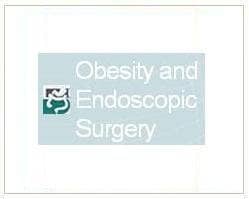







.png)

.png)
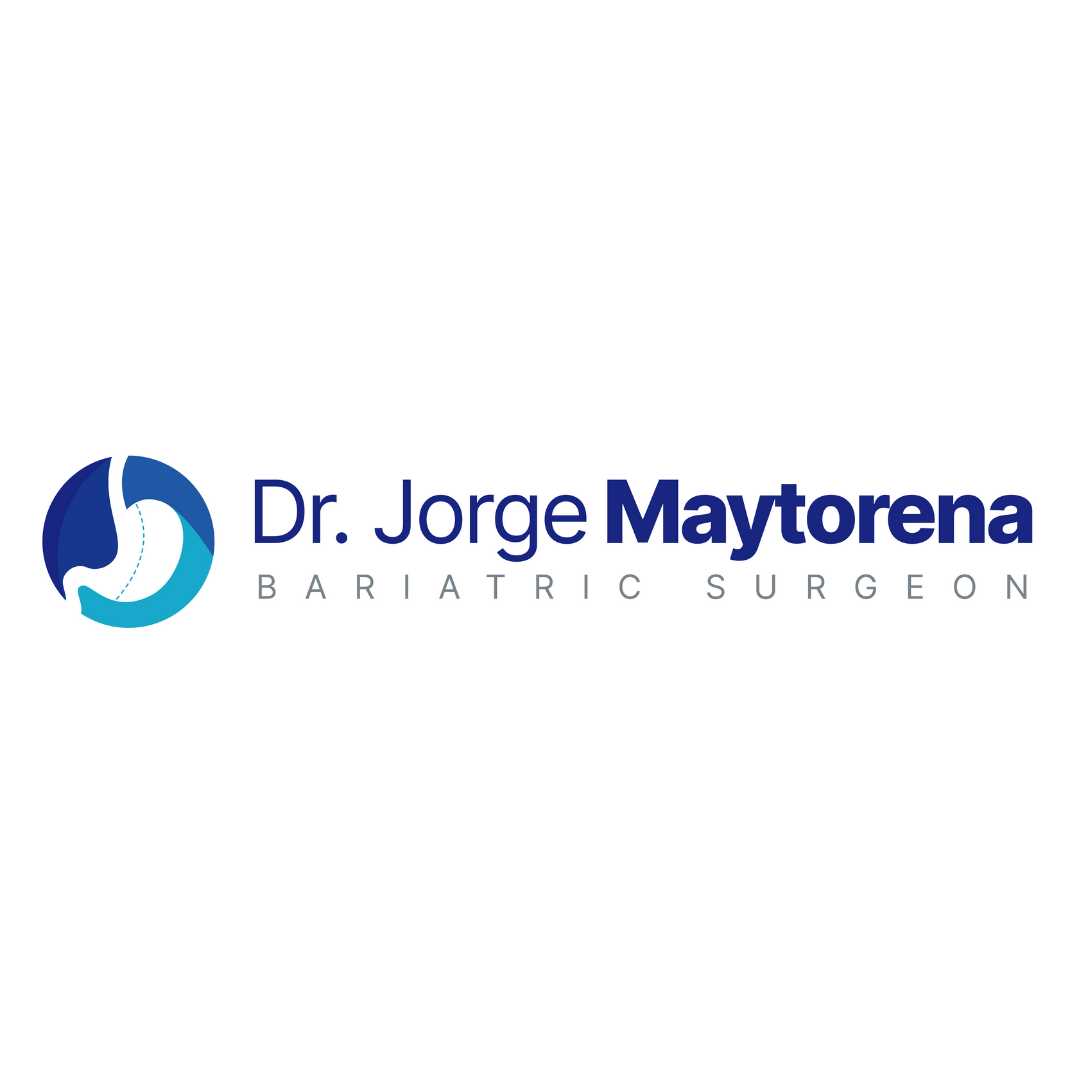
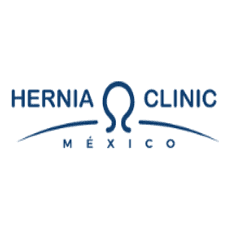
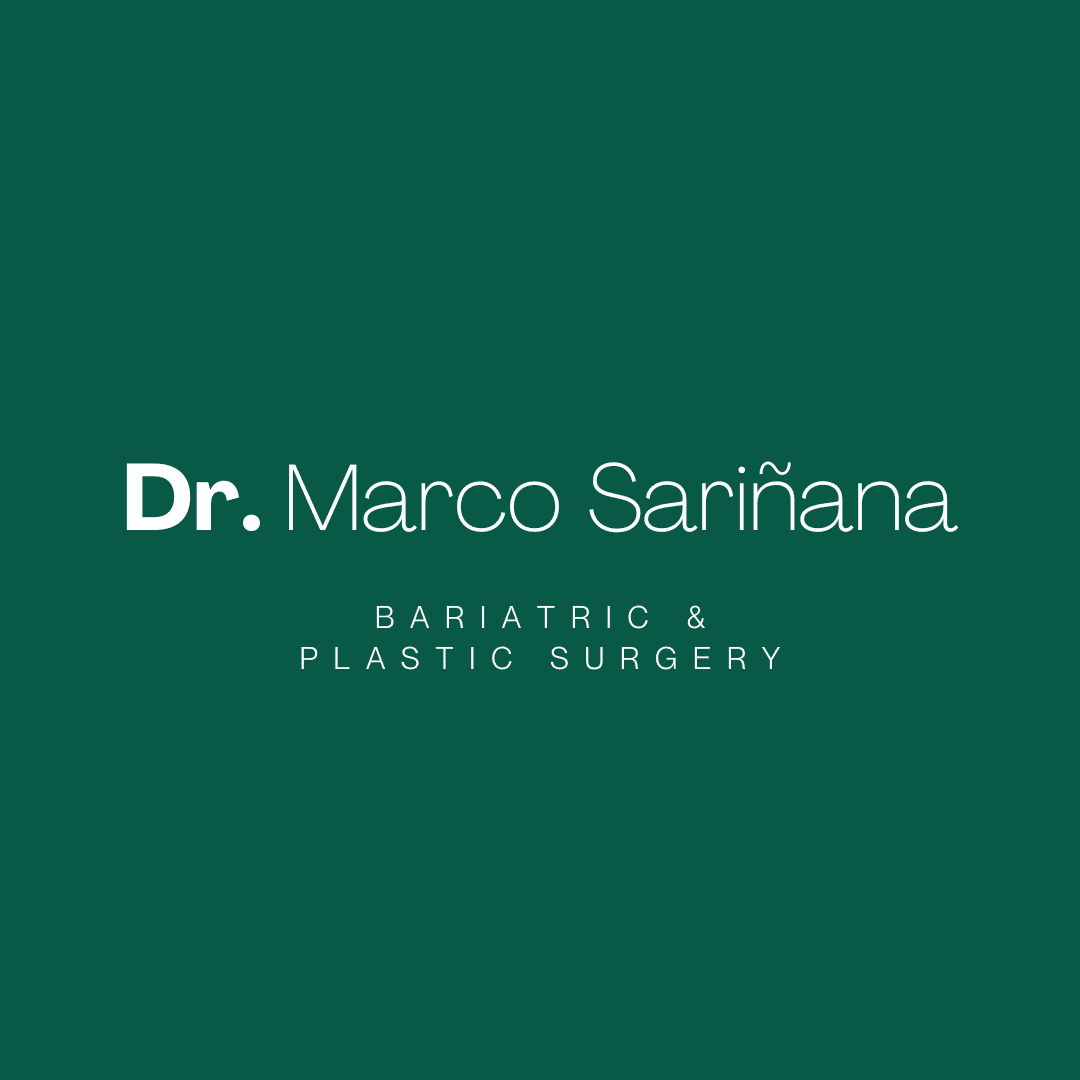

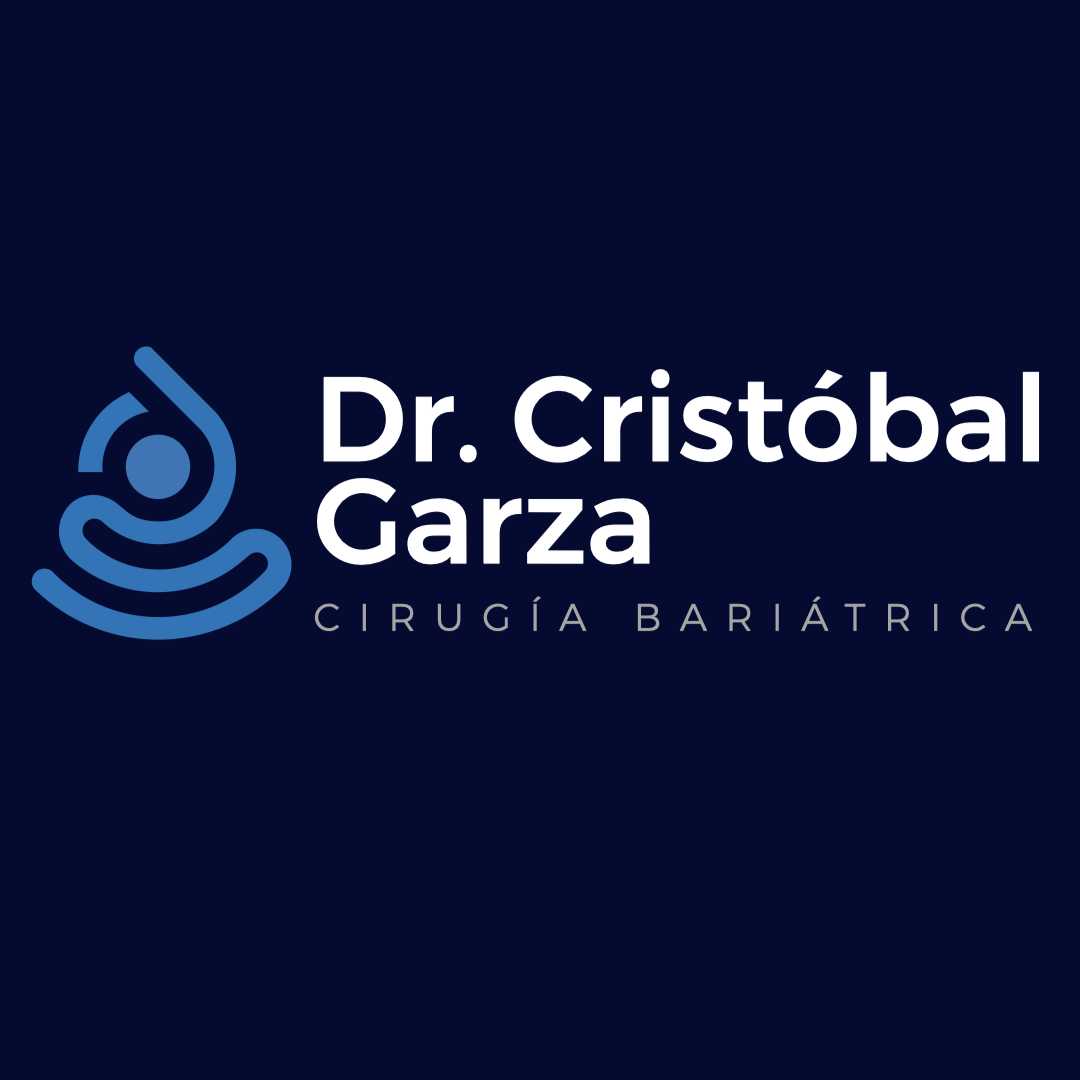

Share this listing